Nowadays, it’s much more efficient to use a paint sprayer rather than a brush or roller. Now, these paint sprayers will get you a smooth and professional finish within a shorter period. However, understand that paint sprayers require more pieces of equipment, including one of the main things – an air compressor.
Understand that you will have to perform a cleanup immediately after you are done with the painting project. Cleaning spray painting equipment is not as simple as it seems, especially when it is your first time. It is an intensive process that requires a little bit of a learning curve to keep your compressor running smoothly.
In this article, we are going to focus on how to clean an air compressor after painting. Note that proper cleaning of your compressed air system will get you a good-quality finish on your next painting job. Well, let’s get started on this informative journey of using a compressor to build air pressure and use air tools.
The importance of cleaning your air compressor
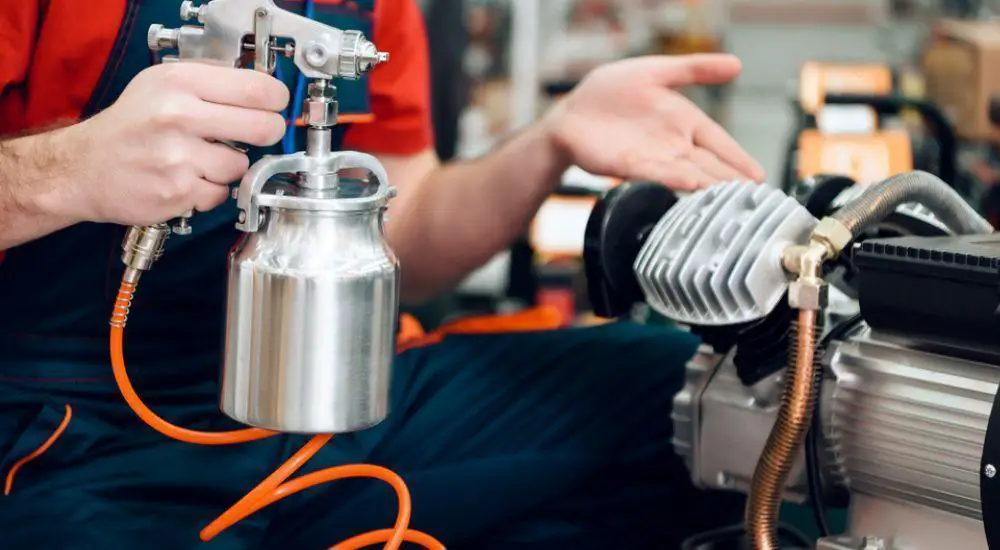
When using an air compressor, it is only natural that airborne particles and moisture will get into your compressed air system. Although the compressor does a great job keeping away solid particles, not much can be done when it comes to humidity.
You, therefore, have to perform regular cleaning to remove all the dust buildup and moisture in your compressor. A clean air compressor ensures that your paint doesn’t get compromised. You can, therefore, get a professional-grade finish once you are done painting.
Proper cleaning of your compressor also protects the mechanical parts of your air compressor from damage. Understand that an air compressor is relatively expensive, and you will spend a fortune during purchase. Protecting it from damage is, therefore, a priority.
Now, preventing moisture and water vapor from making its way to your air compressor is impossible. This is because air includes some level of humidity. You will need to clean your compressed air system regularly to ensure that moisture content is kept at a minimum and prevent air leaks from the tank.
Note that the presence of moisture and liquid water in your compressor will have several adverse effects on both your equipment and future paint jobs. Regardless of the project you are undertaking with compressed air; a professional finish is always necessary.
When moisture in your air compressor is left unattended for long periods, it will create mold. Dealing with mold is quite tricky, especially when it leads to damage to internal components in your compressor. You should get in the habit of using the drain valve to remove moisture from the air tank.
Cleaning your air compressor
1. Receiver tank
A thorough cleaning of your compressor starts with the receiver tank or air tank. Do you know the function of the receiver tank? Well, it stores compressed air that is used during the painting process. However, due to this fact, it is also where most of the moisture will reside.
Note that moisture will condense on the edge of your compressor tank when there is an uptake of pressure. The compressed air gets released into your system and leaves water behind. Note that only dry compressed air comes out of the receiver tank, meaning all the moisture gets left behind.
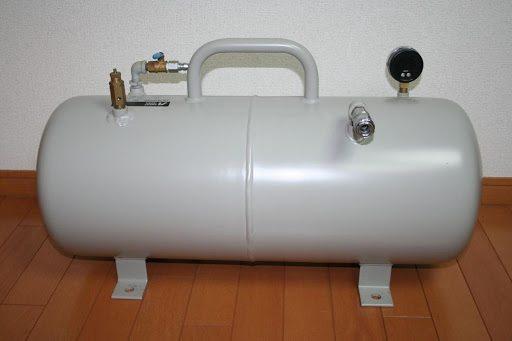
The subtle buildup of moisture will eventually lead to a considerable amount of water in the receiver tank. Understand that the water will mix up with your paint and affect its composition, thus giving you a poor finish.
Cleaning your receiver tank will need the use of a manual drain or mechanical separator. With a manual drain, you will have to open your tank and completely remove the liquid buildup. The good news is that the water is below its boiling point, which means it will be in a liquid state. It is, therefore, relatively easy to drain out the water within a couple of minutes.
You can also use a compressed air dryer to clean your receiver tank. Note that using the air dryer is much more effective when the tank temperature remains above 32 degrees Fahrenheit. The entire step should take a few minutes to complete, thus saving you a lot of time.
The mechanical separator removes moisture from your air compressor by using centrifugal force. The water gets separated from the air quickly and effectively. The choice of which tool to use will depend on your preference.
2. Filter regulator and water trap
Your air compressor includes several other components apart from the receiver tank. The water trap, for example, helps collect moisture and drain it out of your compressed air system to protect your air tools. However, the water trap is hugely affected by debris and dirt.
You, therefore, need to clean your water trap often to ensure that the dust and debris don’t make their way to any other parts of your compressor. Let us take a comprehensive look at how to clean your water trap.
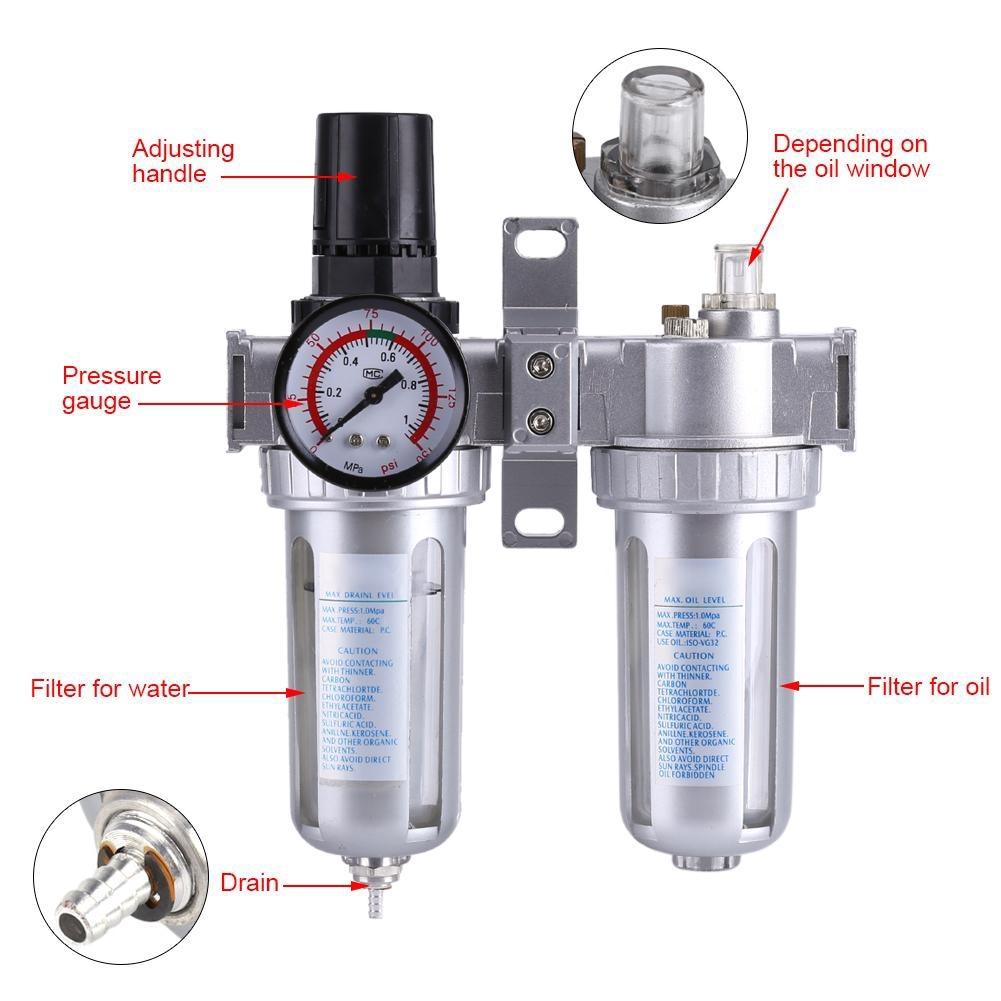
Understand that your water trap includes a filter regulator that traps any debris that gets stuck within the system. Airborne debris and dust get trapped within the filter regulator. You, therefore, have to start by cleaning out the air filter before you can move on to any other components.
All you need to do when cleaning the water trap and filter regulator is to open them up. Use a cloth to wipe the surfaces. You then need to dip the cloth in alcohol and wipe the exterior parts. Note that the alcohol shouldn’t get into the water trap since it is a highly flammable material. What this means is that alcohol inside your system can do a lot of damage when exposed to compressed air.
When you regularly use your air compressor, you have to carry out filter replacements occasionally. It is recommended that you change the filter every three months when you use your air compressor regularly for painting.
Cleaning your water trap and filter regulator takes a few moments because you need to exercise caution. You don’t want to damage the components(this could lead to air leaks), because they are an integral part of your air compressor.
Removing oil from your air compressor
Did you know that oil can cause substantial damage to your air compressor? Yes, water is more common, but oil can also make its way into your system. Too much oil will lead to costly damages that will need the services of a trained professional.
Powder coat applications, for example, will leave oil vapors and mists on your air compressor. This will give you a poor finish during your next painting job. In this section, I will walk you through the most effective way of cleaning oil from your compressor to prevent oil leaks.
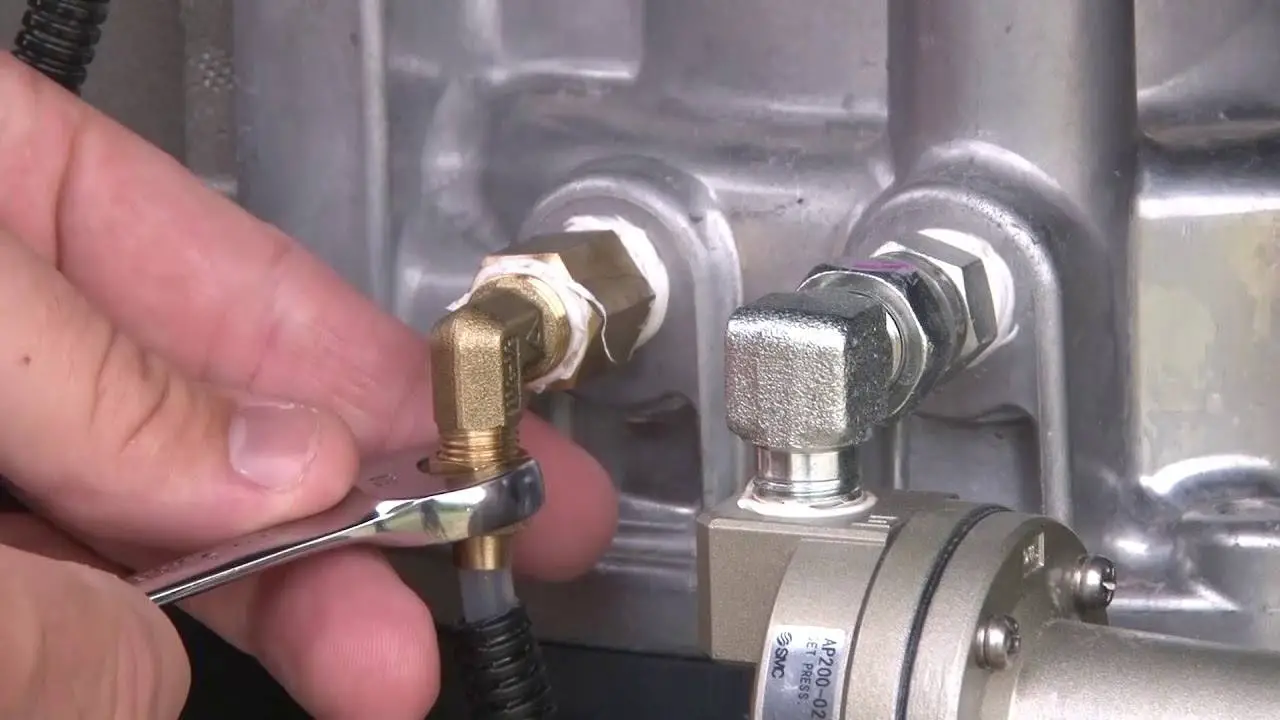
What you need to use is referred to as multi-stage filtration. Note that the different stages of this technique will each remove a different contaminant type. You get to remove a wide range of contaminants, including dirt, moisture, and oil with oil separators.
The compressed airlines are usually filled with oil mist and vapor, which means that they need proper cleaning. Start by removing oil from the compressed airlines by using point of filtration. However, note that the compressed air needs to be as dry as possible to give you the best results.
Cleaning the exterior
When using your air compressor for different tasks, it will collect dust on the exterior surfaces. Note that the dust needs to be cleaned periodically to ensure that it doesn’t get into your system. As stated earlier, dust can damage the components of your compressor.
Use a damp cloth and soapy water to wipe down the surfaces of your air compressor once you have completed a painting job. Wiping down the entire system will only take a couple of minutes to complete. Never forget to wipe down all your equipment whenever you complete any task. This simple task will save you a lot of money on repairs and replacements in the future.
Some of the components of your compressed air system you need to wipe down after painting include; the motor, fan, and air inlet. Don’t forget to wipe any exposed coils that may allow dust to get into your system during the next painting job.
FAQ’s
How to clean an air compressor tank?
To clean a compressor tank, you will need to drain the water and sludge from the tank. You can do this by following these steps:
- Turn off the compressor and unplug it from the power source.
- Locate the drain valve, which is usually located at the lowest point of the tank.
- Open the drain and allow all of the water and sludge to drain out.
- Once the tank is empty, close the drain.
- Wipe down the outside of the tank with a clean cloth.
How to clean an air compressor filter?
To clean a compressor filter, you will need to remove the filter from the compressor and wash it with soap and water. You can also use a vacuum cleaner to remove any dust or debris from the filter. Once the filter is clean, allow it to air dry completely before reinstalling it in the compressor.
How often should I clean my air compressor?
The frequency with which you should clean your compressor depends on how often you use it. If you use your compressor frequently, you may need to clean it as often as once a week. If you use your compressor less frequently, you may only need to clean it once a month or even once a quarter to keep your compressor running smoothly.
What are the signs that my air compressor needs to be cleaned?
There are a few signs that may indicate that your compressor needs to be cleaned. These signs include:
- The compressor is not producing as much power or compressed air as it used to.
- The air compressor is making strange noises when making compressed air.
- The air compressor has oil leaks or water leaks when making compressed air.
If you notice any of these signs, you should clean your air compressor as soon as possible.
Other uses of an air compressor
Did you know that air compressors have other uses apart from painting? Generally, air compressors convert normal air into pressurized air for a variety of uses. These compressors are used in both household, industrial, and professional applications. Well. Read the owner’s manual to understand the other benefits of your air compressor to get value for your money.
Some of the common uses of an air compressor include; pressure washing, inflating car tires, spray painting, HVAC units, scuba diving, agriculture, manufacturing, the energy sector, and construction and cleaning air filters. Understanding air compressor maintenance ensures that you make the most use of compressed air coming from your compressor room.
Read the instructional manual to help you get a clear understanding of how to operate and clean your air compressor. You can also look through different materials to understand all the various uses of a compressed air system.

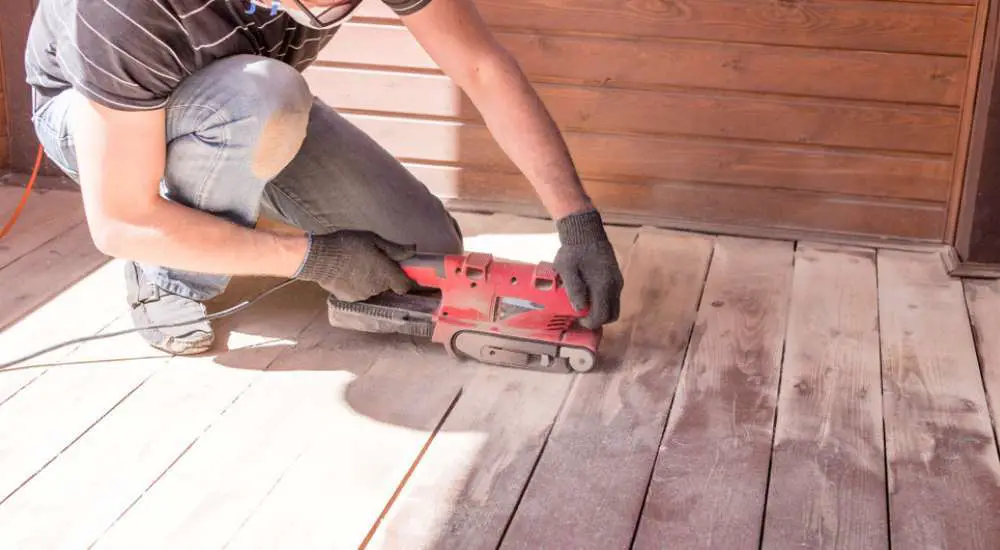
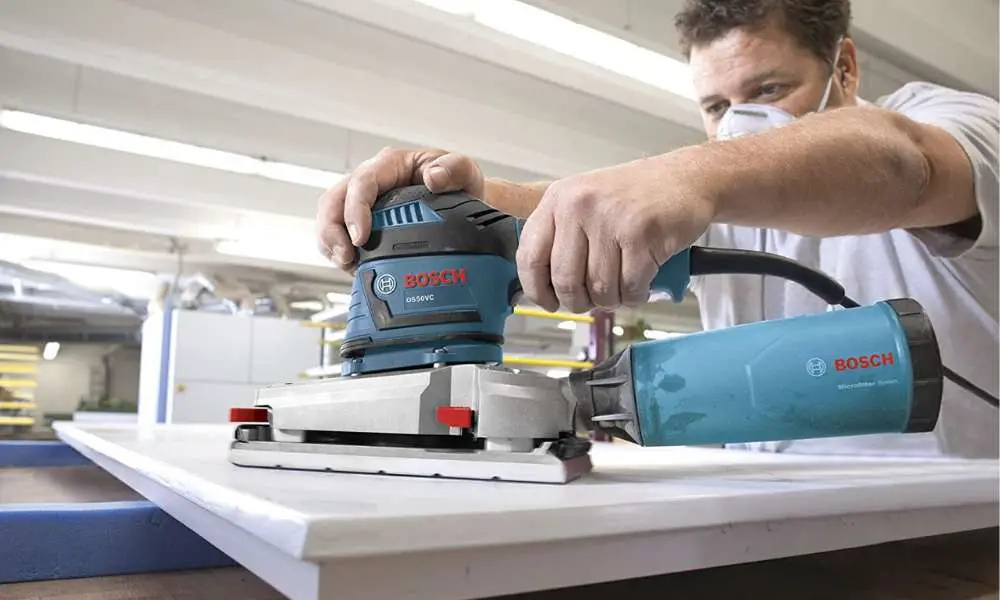
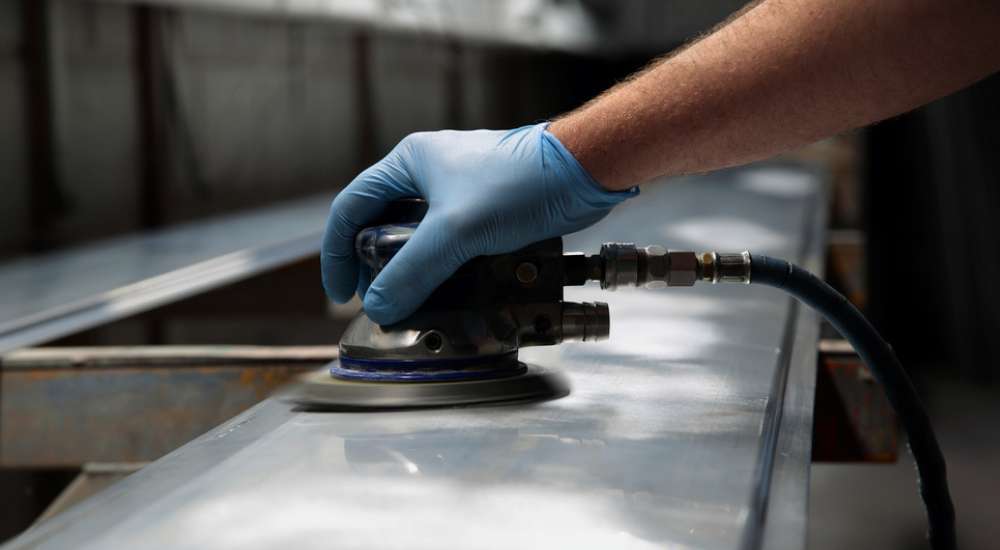
Leave a Reply